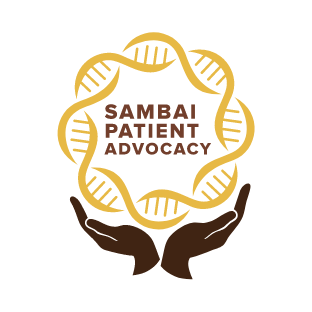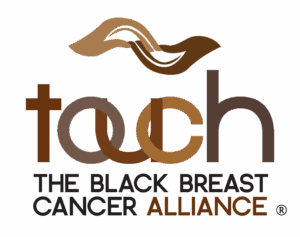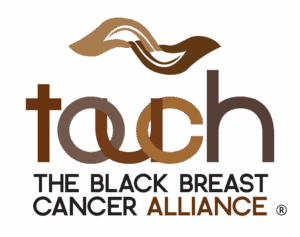
SAMBAI is a 5-year research effort awarded by Cancer Grand Challenges.
This mission aims to tackle global disparities for breast, prostate, and pancreatic cancers in the U.S., the UK, Canada, Ghana, Nigeria, Kenya, Ethiopia, Zambia, and South Africa.
General
Pancreatic Cancer
Prostate Cancer
Breast Cancer
General
General Glossary
- Actionable Genetic Mutation – A change in your DNA that can be used to guide treatment decisions. (Meric-Bernstam F, et al. Nat Rev Clin Oncol. 2015;12(2):73–82. PMID: 25601457)
- Adjuvant – Extra treatment given after the main treatment to help prevent cancer from coming back. (Burstein HJ, et al. J Clin Oncol. 2019;37(5):423–438. PMID: 30653420)
- Alopecia – Hair loss (may occur with cancer treatment). (Wiklund T, et al. Acta Oncol. 2016;55(7):875–82. PMID: 27249707)
- Anemia – A condition where you don’t have enough red blood cells, making you feel tired and weak. (Knight K, et al. BMC Hematol. 2004;4(1):1. PMID: 15461642)
- Artificial Intelligence (AI) – Computer systems designed to do tasks that usually need human intelligence, like understanding speech or recognizing patterns. (Topol EJ. Nat Med. 2019;25(1):44–56. PMID: 30617336)
- Benign – Not cancerous. Benign tumors do not spread and are usually not harmful. In genetics, a “benign variant” is one that does not cause disease. (Willis, R.A. The Spread of Tumours in the Human Body).
- Biomarker – A substance in the body that can be measured to show if a disease is present or how well a treatment is working. (Henry NL, Hayes DF. Clin Cancer Res. 2012;18(20):5961–70. PMID: 23071302)
- Biopsy – A test where a small piece of tissue is removed from the body to check for disease. (Schreuders EH, et al. Gut. 2015;64(12):2025–39. PMID: 26104727)
- Brain Fog – Feeling mentally slow, confused, or having trouble concentrating. (Janelsins MC, et al. J Clin Oncol. 2014;32(28):3369–78. PMID: 25154822)
- BRCA 1 & 2 – Genes that, when changed (mutated), increase the risk of breast, ovarian, prostate, and other cancers. (Kuchenbaecker KB, et al. JAMA. 2017;317(23):2402–2416. PMID: 28632866)
- Cancer – A disease where cells grow uncontrollably and can form tumors or spread to other parts of the body. (Hanahan D, Weinberg RA. Cell. 2011;144(5):646–74. PMID: 21376230)
- Cancer Grades – A way to describe how abnormal cancer cells look under a microscope, compared to a normal cell. It helps the doctor understand how fast the cancer may grow and spread. (Rakha EA, et al. Breast Cancer Res. 2010;12(4):207. PMID: 20663153)
- Cancer Stages – The level of spread of cancer in the body, from early stages where it is just in one place, to later stages where it has spread. (Amin MB, et al. AJCC Cancer Staging Manual (8th Edition).
- Carcinoma – A type of cancer that starts in the skin or tissues that line or cover organs. (Ries LAG, et al. SEER Cancer Statistics Review)
- Cardio Oncology – A field of medicine focusing on heart problems that can happen due to cancer treatments. (Zamorano JL, et al. Eur Heart J. 2016;37(36):2768–801. PMID: 27567406)
- Cell – The basic building block of all living things. (Alberts B, et al. Molecular Biology of the Cell (Textbook)
- CHECK2 – A gene that helps repair DNA; mutations can increase cancer risk. (Cybulski C, et al. J Clin Oncol. 2011;29(8):1082–7. PMID: 21282563)
- Chemo Brain – Mental cloudiness or memory problems that can occur after chemotherapy. (Ahles TA, et al. Nat Rev Clin Oncol. 2012;9(11):677–85. PMID: 23007252)
- Chemotherapy – A powerful type of treatment that kills cancer cells. (DeVita VT Jr, et al. Cancer: Principles & Practice of Oncology)
- Circulating Tumor DNA (ctDNA) – Pieces of DNA from cancer cells found in the blood, used to monitor cancer. (Wan JCM, et al. Nat Rev Cancer. 2017;17(4):223–238. PMID: 28290444)
- Clinical – Related to the observation and treatment of patients. (General medical usage; see standard medical dictionaries.)
- Clinical Decision Support Systems – Computer programs that help doctors make better decisions about patient care. (Roshanov PS, et al. BMJ. 2017;356:j557. PMID: 28420676)
- Clinical Trials – Research studies that test new treatments or new ways of using existing treatments. (Calvert J, et al. Nat Rev Cancer. 2015;15(8):483–8. PMID: 26156647)
- CT Scan – An imaging test that uses X-rays to make detailed pictures of the body. (Brady AP. Clin Radiol. 2020;75(2):113–122. PMID: 31864932)
- Dehydration – When your body loses more fluids than it takes in, making you feel weak and tired. (Chernoff R. Nutr Rev. 1994;52(8 Pt 2):S14–S17. PMID: 8006219)
- DEXA – A scan that measures bone density to check for osteoporosis. (Kanis JA, et al. Lancet. 1987;2(8564):1033–4. PMID: 2889502)
- Diagnosis – Identifying a disease or condition based on symptoms and tests. (Sackett DL, et al. Clinical Epidemiology: A Basic Science for Clinical Medicine)
- Disease Free Survival – In cancer, the length of time after primary treatment for a cancer ends that the patient survives without any signs or symptoms of that cancer. In a clinical trial, measuring the disease-free survival is one way to see how well a new treatment works. Also called DFS, relapse-free survival, and RFS. (Site Source)
- Disease Progression – How a disease changes or gets worse over time. (Daugherty CK, et al. J Clin Oncol. 2005;23(16):3762–71. PMID: 15923569)
- DNA – The molecule that carries genetic information in all living things. (Watson JD, Crick FH. Nature. 1953;171(4356):737–8. (Historic reference)
- Edema – Swelling caused by fluid buildup in the body’s tissues. (Mortimer PS. Clin Dermatol. 1995;13(3):489–501. PMID: 7561588)
- Efficacy – How well a treatment works. (Temple R. J Clin Pharmacol. 1999;39(11):1006–14. PMID: 10574203)
- Epigenetics – The study of molecular modifications that do not involve changes to the DNA sequence itself but can impact the behavior of the cells. (Feinberg AP. Nature. 2018;557(7704):167–170. PMID: 29743603)
- Equity – The quality of being fair and impartial. (Site Source)
- Estrogen – A hormone that helps regulate the female reproductive system and other functions in both men and women. (Simpson ER. Endocr Rev. 2002;23(3):327–64. PMID: 12050121)
- Exposome – The measure of all the environmental factors you are exposed to throughout your life. It can be considered the environmental equivalent of the “genome”. (Wild CP. Cancer Epidemiol Biomarkers Prev. 2005;14(8):1847–50. PMID: 16103423)
- Fatigue – Extreme tiredness that may not go away with rest. (Bower JE. Nat Rev Dis Primers. 2016;2:16014. PMID: 27808248)
- Gene Mutation – A change in the DNA sequence that can affect how genes work. (Strachan T, Read AP. Human Molecular Genetics (Textbook).
- Genetic Alterations (DNA Damage) – Changes or damage to the DNA that can lead to diseases like cancer. (Jackson SP, et al. Nat Rev Mol Cell Biol. 2009;10(10):730–8. PMID: 19730436)
- Genetic and Molecular Profiling – Testing to understand the specific genetic and molecular changes in a disease. (Schwaederle M, et al. Cancer Res. 2016;76(3):369–79. PMID: 26719595)
- Genetics – The study of genes and heredity. (Griffiths AJF, et al. An Introduction to Genetic Analysis (Textbook).
- Genome – The complete set of genes or DNA within a cell. (Venter JC, et al. Science. 2001;291(5507):1304–51. PMID: 11181995)
- Genomics – The study of genomes and how genes interact with each other and the environment. (Goodwin S, et al. Nat Rev Genet. 2016;17(6):333–51. PMID: 27184599)
- Geriatric Oncology – The study and treatment of cancer in older adults. (Extermann M, et al. J Clin Oncol. 2014;32(14):1529–33. PMID: 24799476)
- Germline – The DNA passed from parents to children, which can be inherited. (Rahman N. N Engl J Med. 2014;371(15):1448–56. PMID: 25295534)
- Gleason Score – A system used to grade prostate cancer based on how abnormal the cells look. (Epstein JI, et al. Am J Surg Pathol. 2005;29(9):1228–42. PMID: 16160459)
- Grade – How much cancer cells look like normal cells under a microscope, indicating how fast the cancer might grow. (Lester SC, et al. Diagnostic Pathology: Breast (Reference text)
- Health Disparities – Differences in health outcomes among different groups of people, especially differences that are seen as unfair/unjust. (Siegel RL, et al. CA Cancer J Clin. 2023;73(1):17–48. PMID: 36381552)
- Health Equity – Ensuring everyone has a fair and just opportunity to be as healthy as possible. (Braveman P. J Epidemiol Community Health. 2006;60(4):254–8. PMID: 16537356)
- HER2 – A protein that can promote the growth of cancer cells, especially in breast cancer. (Moasser MM. Oncogene. 2007;26(45):6469–87. PMID: 17471238)
- Homologous Recombination Deficiency (HRD) – A condition where cells can’t repair certain types of DNA damage, which can increase cancer risk. (O’Connor MJ. Mol Cell. 2015;58(6):886–98. PMID: 26091341)
- Homologous Recombination Repair (HRR) – A process cells use to repair DNA damage. (Prakash R, et al. Annu Rev Genet. 2015;49:193–222. PMID: 26436458)
- Imaging – Techniques used to create pictures of the inside of the body to help diagnose diseases. (Mahoney MC, et al. CA Cancer J Clin. 2015;65(4):250–81. PMID: 26062336)
- Immuno-Oncology – A field of medicine that uses the body’s immune system to fight cancer. (Couzin-Frankel J. Science. 2013;342(6165):1432–3. PMID: 24357281)
- Immunology – The study of the immune system and how it helps protect the body from diseases. (Murphy K, Weaver C. Janeway’s Immunobiology (Textbook).
- Immunotherapy – A type of treatment that helps your immune system fight cancer. (Mellman I, et al. Nature. 2011;480(7378):480–9. PMID: 22193102)
- In Situ – Cancer that is still in the place where it started and hasn’t spread. (Erbas B, et al. Breast Cancer Res. 2006;8(4):R44. PMID: 16859544)
- Incidence – The number of new cases of a disease in a specific period of time. (Bray F, et al. CA Cancer J Clin. 2018;68(6):394–424. PMID: 30207593)
- Induction Therapy – The first treatment given for a disease. An example: surgery followed by chemotherapy or radiation. (Site Source)
- Inherited Mutations – Genetic changes that are passed from parents to children and can increase the risk of certain diseases. (Vogelstein B, et al. N Engl J Med. 1988;319(13):807–12. PMID: 2841599)
- Invasive – Cancer that has spread beyond its original location into nearby tissues. (Erbas B, et al. Breast Cancer Res. 2006;8(4):R44. PMID: 16859544)
- Life Expectancy – The average number of years a person is expected to live. (Arias E, et al. Natl Vital Stat Rep. 2022;71(1):1–18. PMID: 35861893)
- Liquid Biopsy – A test that analyzes a blood sample to look for cancer cells or DNA. (Alix-Panabières C, Pantel K. Nat Rev Cancer. 2014;14(9):623–31. PMID: 25154812)
- Locally Advanced – Cancer that has spread to nearby tissues or lymph nodes but not to distant parts of the body. (O’Sullivan B, et al. Lancet Oncol. 2018;19(4):e201–e211. PMID: 29606555)
- Longitudinal Study – Research that follows the same people over a long period to see how their health changes. (Caruana EJ, et al. Perspect Med Educ. 2015;4(2):136–9. PMID: 25894388)
- Lymph Dissection – Surgery to remove lymph nodes to check for cancer spread. (Giuliano AE, et al. JAMA. 2011;305(6):569–75. PMID: 21304082)
- Lymph Nodes – Small, bean-shaped structures that help fight infections and can be affected by cancer. (Gray’s Anatomy or any standard anatomy reference)
- Lymphedema – Swelling caused by a buildup of lymph fluid, often after lymph nodes are removed or damaged. (McLaughlin SA, et al. Cancer. 2008;113(12 Suppl):2798–809. PMID: 19040209)
- Malignancy – A term for cancerous growths that can spread to other parts of the body. (Willis RA. Pathology of Tumours. (Classic reference)
- Malignant Tumor – A cancerous tumor that can invade nearby tissues and spread to other parts of the body. (Hanahan D, Weinberg RA. Cell. 2011;144(5):646–74. PMID: 21376230)
- Medical Oncology – The branch of medicine that uses different types of medicine to treat cancer. (DeVita VT Jr, et al. Cancer: Principles & Practice of Oncology)
- Metastasis – When cancer spreads from its original location to other parts of the body. (Steeg PS. Nat Med. 2006;12(9):895–904. PMID: 16960575)
- Minimal Residual Disease – Small amounts of cancer cells that may remain after treatment and could cause a relapse (return of disease). (Pantel K, Alix-Panabières C. Clin Chem. 2019;65(7):849–857. PMID: 31053651)
- Molecular Biology – The study of molecules and how they interact to form and regulate (control) cells. (Watson JD, et al. Molecular Biology of the Gene (Textbook)
- Molecule – A group of atoms bonded together, which is the smallest unit of a chemical compound.(Site Source)
- Mortality – The number of deaths in a population over a specific period of time—reflects a combination of incidence and survival. (Siegel RL, et al. CA Cancer J Clin. 2023;73(1):17–48. PMID: 36381552)
- MRI (Magnetic Resonance Imaging) – An imaging test that uses magnets and radio waves to create pictures of the inside of the body. (Bloch F. Phys Rev. 1946;70(7–8):460–74. (Historic foundational work)
- Multiparametric Magnetic Resonance Imaging (mpMRI) – A type of MRI that provides detailed images of the prostate to help diagnose and plan treatment. (Dickinson L, et al. Lancet Oncol. 2011;12(6):603–6. PMID: 21592886)
- Mutation – A change in the instructions inside our cells that tell them how to work… might lead to problems like diseases. (Vogel F. Hum Genet. 1979;46(3):223–46. PMID: 387965)
- Neoadjuvant – Treatment given as a first step to shrink a tumor before the main treatment, which is usually surgery, is given. Examples of neoadjuvant therapy include chemotherapy, radiation therapy, and hormone therapy. It is a type of induction therapy. (Site Source)
- Oncologist – A doctor who specializes in treating cancer. (Standard medical directories)
- Oncology – The study and treatment of cancer. (DeVita VT Jr, et al. Cancer: Principles & Practice of Oncology)
- Overall Survival Rate – The percentage of people who are still alive after a certain period of time following a diagnosis or treatment. (McGuire S. Adv Nutr. 2016;7(6):975–976. PMID: 27899577)
- Pallative Care – A specialized medical care provided by a team of healthcare providers (doctors, nurses, social workers, and other trained specialists) that focuses on providing relief from pain and other symptoms of a serious illness. It can also help you manage side effects from medical treatments. (Site Source)
- Pathologist – A doctor who studies tissues and cells to diagnose diseases. (College of American Pathologists guidelines)
- PET Scan – An imaging test that shows how organs and tissues are working. (Basu S, et al. Eur J Nucl Med Mol Imaging. 2011;38(5):875–95. PMID: 21298341)
- Progression Free Survival – The length of time during and after the treatment of a disease, such as cancer, that a patient lives with the disease but it does not get worse. In a clinical trial, measuring the progression-free survival is one way to see how well a new treatment works. Also called PFS.
- Proton Radiation – A type of cancer treatment that uses tiny particles called protons to destroy cancer cells while trying to protect nearby healthy cells. (Suit H, et al. Radiother Oncol. 2010;95(1):3–22. PMID: 20304699)
- Racism – Treating someone unfairly or being hostile toward them just because they belong to a certain racial or ethnic group, especially if that group is often treated unfairly or has less power in society. (Site Source)
- Radiation – High-energy rays used to kill or damage cancer cells. (Delaney G, et al. Cancer. 2005;104(6):1129–37. PMID: 16130126)
- Radiation Oncology – The medical field that focuses on treating cancer using radiation. General (Gunderson LL, et al. Clinical Radiation Oncology (Textbook).
- Radioligand Therapy – A treatment that uses special medicines attached to radioactive substances to find and destroy cancer cells. (Strosberg JR, et al. N Engl J Med. 2017;376(2):125–135. PMID: 28076709)
- Radiotherapy – Another term for treatment using radiation to kill cancer cells or shrink tumors. (Baskar R, et al. Front Oncol. 2012;2:80. PMID: 22649787)
- Reconstructive Surgery – Surgery done to rebuild or repair parts of the body after injury or cancer treatment. (Cordeiro PG. Plast Reconstr Surg. 2016;138(6):1245–1257. PMID: 27930437)
- Recurrence – When cancer come back after successful treatment and a defined period of being disease free. (Morris E, et al. Br J Cancer. 2008;99(7):1137–43. PMID: 18781172)
- Resectable – When a tumor or cancer can be removed by surgery. (Tempero MA, et al. Nat Rev Clin Oncol. 2021;18(2):131–148. PMID: 33199837)
- Sarcoma – A type of cancer that starts in the bones or soft tissues, like muscles or fat. (Stiller CA, et al. Eur J Cancer. 2013;49(17):3884–901. PMID: 24007962)
- Statistical Bias – When the results of a study or data analysis are unfair or misleading because of the way the data was collected, measured, or interpreted. It does not properly represent the population. (See source for more information) (Site Source)
- Structural Racism – When laws, policies, and systems in society unfairly benefit some racial groups while disadvantaging others. (See source for more information) (Site Source)
- Supportive Care – Care given to improve the quality of life of people who have an illness or disease by preventing or treating, as early as possible, the symptoms of the disease and the side effects caused by treatment of the disease. (Site Source)
- Surgical Oncology – The branch of medicine that uses surgery to treat cancer. (Balch CM, et al. Ann Surg Oncol. 2013;20(5):1372–7. PMID: 23208336)
- Survival Rate – The percentage of individuals with a specific cancer diagnosis who are alive after a defined period. (See source for more information) (Site Source)
- Survivorship – In cancer, survivorship focuses on the health and well-being of a person with cancer from the time of diagnosis until the end of life. This includes the physical, mental, emotional, social, and financial effects of cancer that begin at diagnosis and continue through treatment and beyond. The survivorship experience also includes issues related to follow-up care (including regular health and wellness checkups), late effects of treatment, cancer recurrence, second cancers, and quality of life. Family members, friends, and caregivers are also considered part of the survivorship experience. (Site Source 1 – Site Source 2)
- Transcript – A copy of genetic instructions from DNA that helps cells make protein. (See source for more information) (Site Source)
- Transcriptomics – The study of all the transcripts (copies of genetic instructions) in a cell to understand how genes are working.(Site Source) (Wang Z, et al. Nat Rev Genet. 2009;10(1):57–63. PMID: 19015660)
- Tumor Burden – The total amount of cancer cells or size of cancer in the body. (Site Source)
- Tumor Marker – A substance found in tissue, blood, bone marrow, or other body fluids that may be a sign of cancer or certain benign (noncancer) conditions. (Site Source)
- Unresectable – When a tumor or cancer cannot be removed by surgery. (Site Source) (Gourgou-Bourgade S, et al. JAMA. 2013;309(20):2140–7. PMID: 23689767)
- Variant of Uncertain Significance (VUS) – A change in a gene that isn’t clearly harmful or harmless, so doctors aren’t sure what it means for health. (See source for more information) (Site Source).
Pancreatic Cancer
Pancreatic Cancer
- Adenocarcinoma – A type of cancer that starts in gland-forming cells, such as those lining the organs like the pancreas or lungs. (Ryan DP, et al. N Engl J Med. 2014;371(11):1039–49. PMID: 25207767)
- Islet Cell – Cells in the pancreas that produce insulin; cancer here affects these cells. (Halfdanarson TR, et al. Pancreas. 2008;37(3):274–8. PMID: 18815548)
- Neuroendocrine Tumors – Rare tumors that start in hormone-producing cells of the pancreas. (Yao JC, et al. J Clin Oncol. 2008;26(18):3063–72. PMID: 18565894)
- Whipple Surgery – Pancreatic – A complex surgery to remove part of the pancreas, along with parts of other nearby organs, to treat pancreatic cancer. (See
Prostate Cancer
Prostate Cancer
- Brachytherapy – Seed Implants – A type of cancer treatment where tiny radioactive seeds are placed inside or near the tumor in the prostate. (Grimard L, et al. Urol Clin North Am. 2010;37(3):513–9. PMID: 20728172)
- Orchiectomy – A surgery to remove one or both testicles. (Site Source)
- Prostate-Specific Antigen (PSA) – A substance made by the prostate gland that can be measured in the blood to help check for prostate problems, including cancer. (Catalona WJ, et al. J Urol. 1991;145(4):790–4. PMID: 1705960)
- Prostate-Specific Membrane Antigen-PET (PSMA-PET) Imaging – A special type of scan that helps doctors see if prostate cancer has spread by looking for a specific protein on prostate cancer cells. (Perera M, et al. Eur Urol. 2016;70(2):211–9. PMID: 26806651)
- Prostatectomy – A surgical procedure to remove part or all of the prostate and some of the tissue around it. (Site Source)
- Urologist – A doctor who has special training in diagnosing and treating diseases of the urinary organs in females and the urinary and reproductive organs in males. (Site Source)
Breast Cancer
Breast Cancer
- Breast Reconstruction – Surgery to rebuild the shape and appearance of a breast after mastectomy (breast removal surgery). (Yueh JH, et al. Cancer. 2010;116(22):5584–94. PMID: 20578141)
- Ductal Carcinoma – A type of breast cancer that starts in the part of the breast that carries milk (ducts). (Fisher ER, et al. Cancer. 1978;41(5):1978–89. PMID: 416074)
- Invasive Ductal Carcinoma – A type of breast cancer that starts in the ducts and spreads into surrounding breast tissue (Li CI, et al. Cancer Epidemiol Biomarkers Prev. 2005;14(11):2514–20. PMID: 16284304)
- Lumpectomy – Surgery to remove just the tumor and a small amount of surrounding tissue from the breast. (Fisher B, et al. N Engl J Med. 2002;347(16):1233–41. PMID: 12393819)
- Mammaprint – A test that analyzes breast cancer genes to help determine the risk of cancer returning. (Van ‘t Veer LJ, et al. Nature. 2002;415(6871):530–6. PMID: 11823860)
- Mastectomy – Surgery to remove one or both breasts to treat or prevent breast cancer. (Carbine NE, et al. Cochrane Database Syst Rev. 2018;4:CD002748. PMID: 29709011)
- Metaplastic Triple-Negative Breast Cancer (TNBC) – A rare and aggressive type of breast cancer that doesn’t have the usual hormone receptors. (Jung SY, et al. Breast Cancer Res Treat. 2010;124(3):753–9. PMID: 20521087)
- Radical Bilateral Mastectomy – A surgery to remove both breasts, often done for serious cases of breast cancer. (Wright FC, et al. CMAJ. 2006;174(9):1273–7. PMID: 16636328)
- Triple-Negative Breast Cancer (TNBC) – A type of breast cancer that doesn’t have the three common types of hormone receptors, making it harder to treat with usual hormone therapies. Site Source










